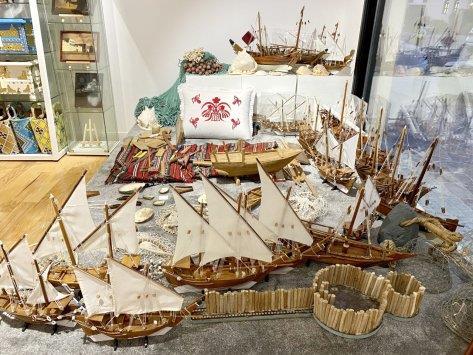
Qatar- Katara shows strong support to local handicraft industry
(MENAFN- The Peninsula) Doha: A beacon of culture and the arts, the Cultural Village Foundation — Katara continues to be highly supportive of Qatar's handicraft industry launching a number of initiatives and organising several events recently.
Wednesday's opening of the third Traditional Handicrafts Exhibition at Building 48 is a clear demonstration of Katara's strong support for the industry.
Building 48 is home to the Handicrafts Gallery which contains a display of the rich variety of indigenous Qatari handicrafts which are considered a significant part of national identity. Long before the discovery of oil and gas, Qataris had a vibrant handicraft industry that expressed their cultural identity, from traditional weaving to clothing to perfume making.
The Handicrafts Gallery at Katara displays examples of the wide range of handcrafted local products including miniature dhows, batoola, boxes, dolls, falcon hoods and products made from Sadu weavings, among others.
Well known in Bedouin societies, Sadu is a traditional handicraft of knitting wool from sheep, camels and goats using traditional tools in spinning and knitting which are still practiced by some women in Qatar today. Prior to the launch of the exhibition, Katara through its Heritage Committee concluded workshop on Handicraft Product Development which witnessed the participation of 12 craftswomen engaged in Sadu industry.
The workshop comes within the framework of the programme of developing traditional products aimed at preserving local traditional heritage as well as building the capacity and expanding the horizons of women artisans in the country. More such workshops will be organized in the future.
Another traditional handicraft showcased at the gallery is Al Khous which uses palm leaves to make native products such as baskets and mats which can be seen in traditional households in Qatar.
Also shown in the gallery are miniature dhows which are based on traditional wooden boats used by Qataris during the pre-oil and gas era as a source of livelihood when they go to the sea to dive for pearls and catch fish.
Some of the most important types of dhows are Al Bateel, Al Baghala, Al Jalbot, Al Sanbook, Al Baggara, and El Shahouf which can be seen on show at the Katara Traditional Dhow Festival organised by the Cultural Village every year.
A live demonstration of gypsum decoration, another handicraft known in Qatar and the region, is one of the attractions at the exhibition. Gypsum has been chiefly used to adorn facades of Qatari homes and various structures depicting geometric designs among other themes.
The 10-day exhibition also features handicrafts and artisans from seven other Arab countries including Ethiopia, Syria, Palestine, Tunisia, Morocco, Sudan, and Iran.
Several months ago, Katara organized a handicraft competition inspired by women's craft legacy in cooperation with the Qatari Women's Pen Forum. The Katara Handicraft Competition was aimed at providing opportunities to exchange ideas, experiences, and discover the aesthetics of Qatari women works while documenting the national identity.
Just recently, Katara also extended invitation to artisans and companies who wish to participate in its inaugural International Handicrafts and Traditional Products Cultural Market slated from November 1 this year to February 28 next year.

Legal Disclaimer:
MENAFN provides the
information “as is” without warranty of any kind. We do not accept
any responsibility or liability for the accuracy, content, images,
videos, licenses, completeness, legality, or reliability of the information
contained in this article. If you have any complaints or copyright
issues related to this article, kindly contact the provider above.


















Comments
No comment